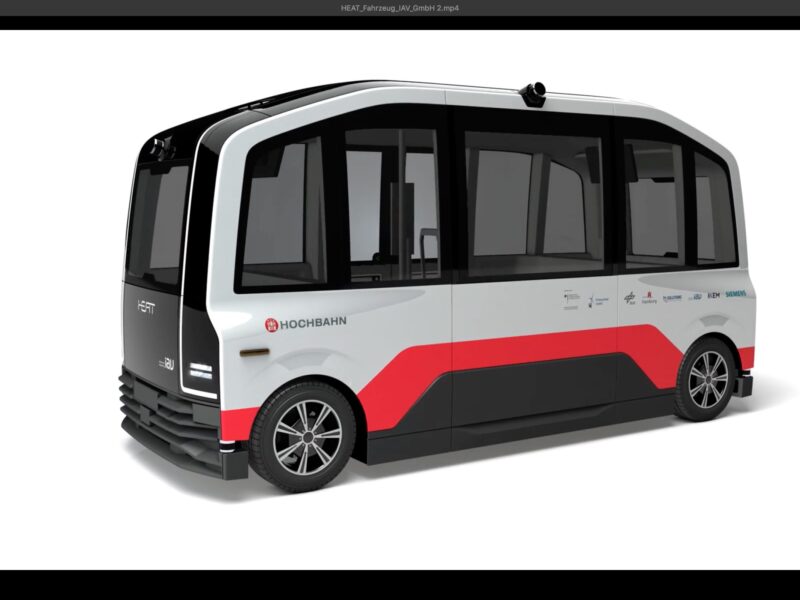
City of Hamburg to test robot buses in normal traffic
In addition to the vehicle specially developed for this project, the project focuses on questions of traffic and information technology infrastructure, digital control technology and technical interfaces. The most important development objective is to prove that the autonomous minibuses can be used in local public transport. The test track for the emission-free electric buses is located in Hamburg’s HafenCity in the immediate vicinity of the Elbphilharmonie, Hamburgs large concert hall.
The HEAT project provides for a step-by-step approach. In the first phase from spring 2019 there will be a test run on a fixed route without passengers and with a professional vehicle attendant who can intervene immediately if necessary. In the next phase, passengers will also be taken along. Furthermore, a vehicle companion will be on board. By the ITS World Congress in 2021, completely autonomous operation without a vehicle attendant is to take place.
The minibus developed by the engineering company IAV is about 5 meters long, 2 meters wide, 2.6 meters high and weighs about 4 tons. The vehicle can accommodate a maximum of 16 passengers. The first vehicle is expected to arrive in Hamburg before the end of this year. A total of three vehicles are planned for the research and development project. The batteries for the electric drive are to be charged via a charging station in HafenCity operated by the energy provider Vattenfall.
In addition to equipping the vehicle with cameras, radar and lidar, additional infrastructure (active and passive sensors) is also required for integration into real road traffic and the maximum speed of 50 km/h required for this. The track will be equipped with sensor elements and digital communication systems for this purpose.
In addition, operation is monitored via the control centre of the local city transport operator Hochbahn AG, which can issue appropriate driving commands for the vehicle depending on the respective traffic situation. Vehicle, infrastructure and control centre represent the overall system, which is to ensure high security and availability of autonomous operation.
The test track will be 3.6 kilometers long and comprise nine stops. In the final stage of construction, the line will pass 12 traffic lights; the vehicle must change direction eight times during the course of the line. Work on the expansion of the infrastructure is scheduled to start in the coming months; the first test runs are planned for the beginning of next year.
Members of the development consortium are, besides IAV, the Institute for Climate Protection, Energy and Mobility (IKEM), electric giant Siemens and the German aerospace research institute DLR.
 If you enjoyed this article, you will like the following ones: don't miss them by subscribing to :
eeNews on Google News
If you enjoyed this article, you will like the following ones: don't miss them by subscribing to :
eeNews on Google News




